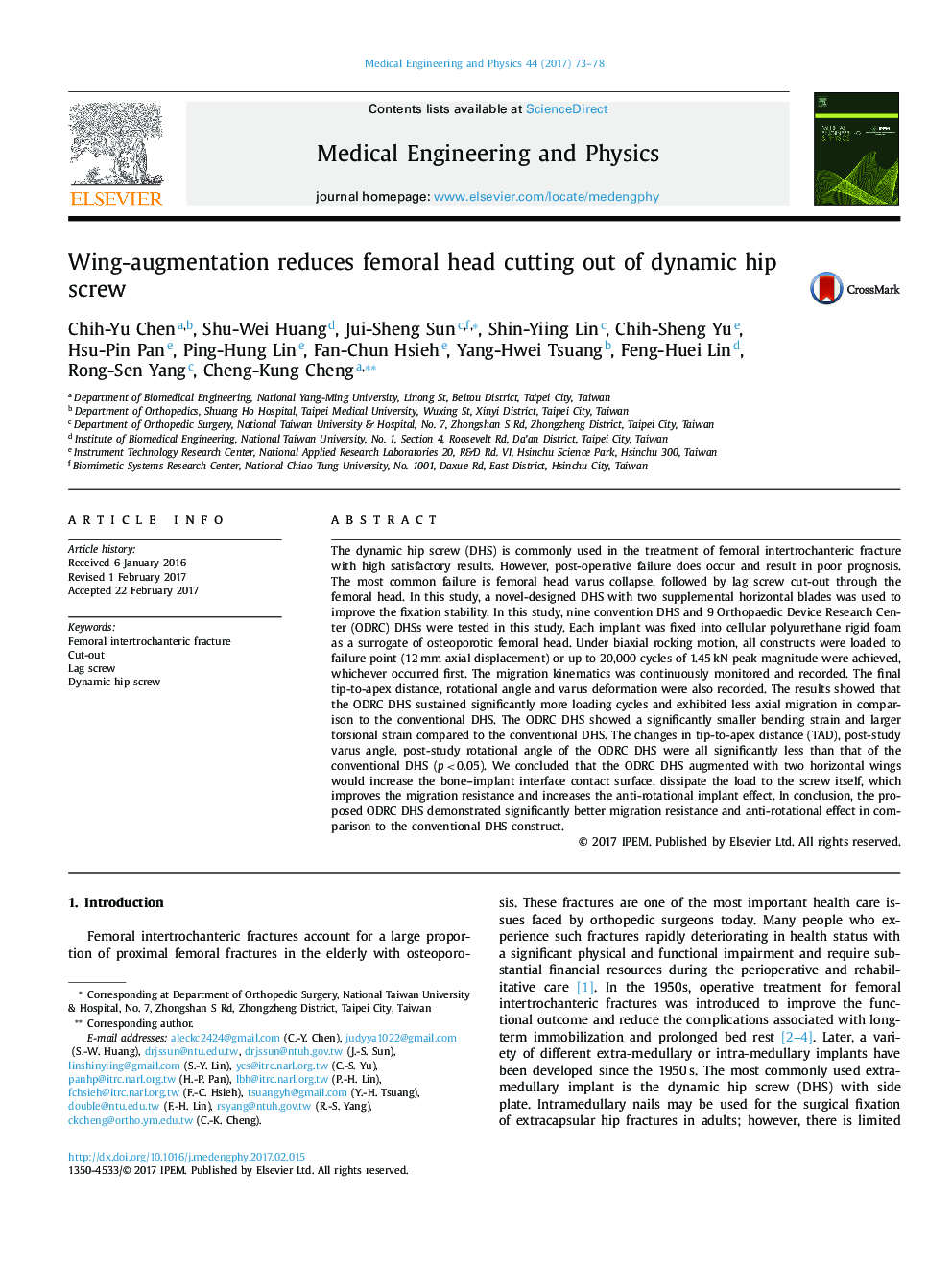| Article ID | Journal | Published Year | Pages | File Type |
|---|---|---|---|---|
| 5032702 | Medical Engineering & Physics | 2017 | 6 Pages |
â¢Post-operative failure does occur after DHS treatment for femoral intertrochanteric fracture and result in poor prognosis.â¢A novel-designed DHS with two supplemental horizontal blades was used to improve the fixation stability.â¢The ODRC DHS augmented with two horizontal wings would increase the bone-implant interface contact surface, dissipate the load to the screw itself, which improves the migration resistance and increases the anti-rotational implant effect.â¢The proposed ODRC DHS demonstrated significantly better migration resistance and anti-rotational effect in comparison to the conventional DHS construct.
The dynamic hip screw (DHS) is commonly used in the treatment of femoral intertrochanteric fracture with high satisfactory results. However, post-operative failure does occur and result in poor prognosis. The most common failure is femoral head varus collapse, followed by lag screw cut-out through the femoral head. In this study, a novel-designed DHS with two supplemental horizontal blades was used to improve the fixation stability. In this study, nine convention DHS and 9 Orthopaedic Device Research Center (ODRC) DHSs were tested in this study. Each implant was fixed into cellular polyurethane rigid foam as a surrogate of osteoporotic femoral head. Under biaxial rocking motion, all constructs were loaded to failure point (12Â mm axial displacement) or up to 20,000 cycles of 1.45Â kN peak magnitude were achieved, whichever occurred first. The migration kinematics was continuously monitored and recorded. The final tip-to-apex distance, rotational angle and varus deformation were also recorded. The results showed that the ODRC DHS sustained significantly more loading cycles and exhibited less axial migration in comparison to the conventional DHS. The ODRC DHS showed a significantly smaller bending strain and larger torsional strain compared to the conventional DHS. The changes in tip-to-apex distance (TAD), post-study varus angle, post-study rotational angle of the ODRC DHS were all significantly less than that of the conventional DHS (pâ<â0.05). We concluded that the ODRC DHS augmented with two horizontal wings would increase the bone-implant interface contact surface, dissipate the load to the screw itself, which improves the migration resistance and increases the anti-rotational implant effect. In conclusion, the proposed ODRC DHS demonstrated significantly better migration resistance and anti-rotational effect in comparison to the conventional DHS construct.
